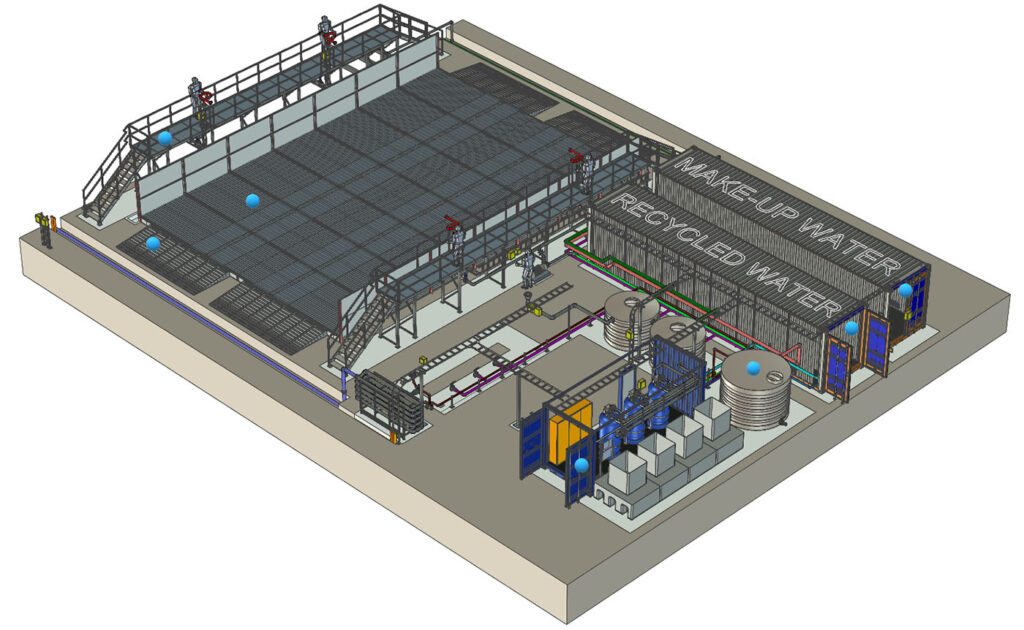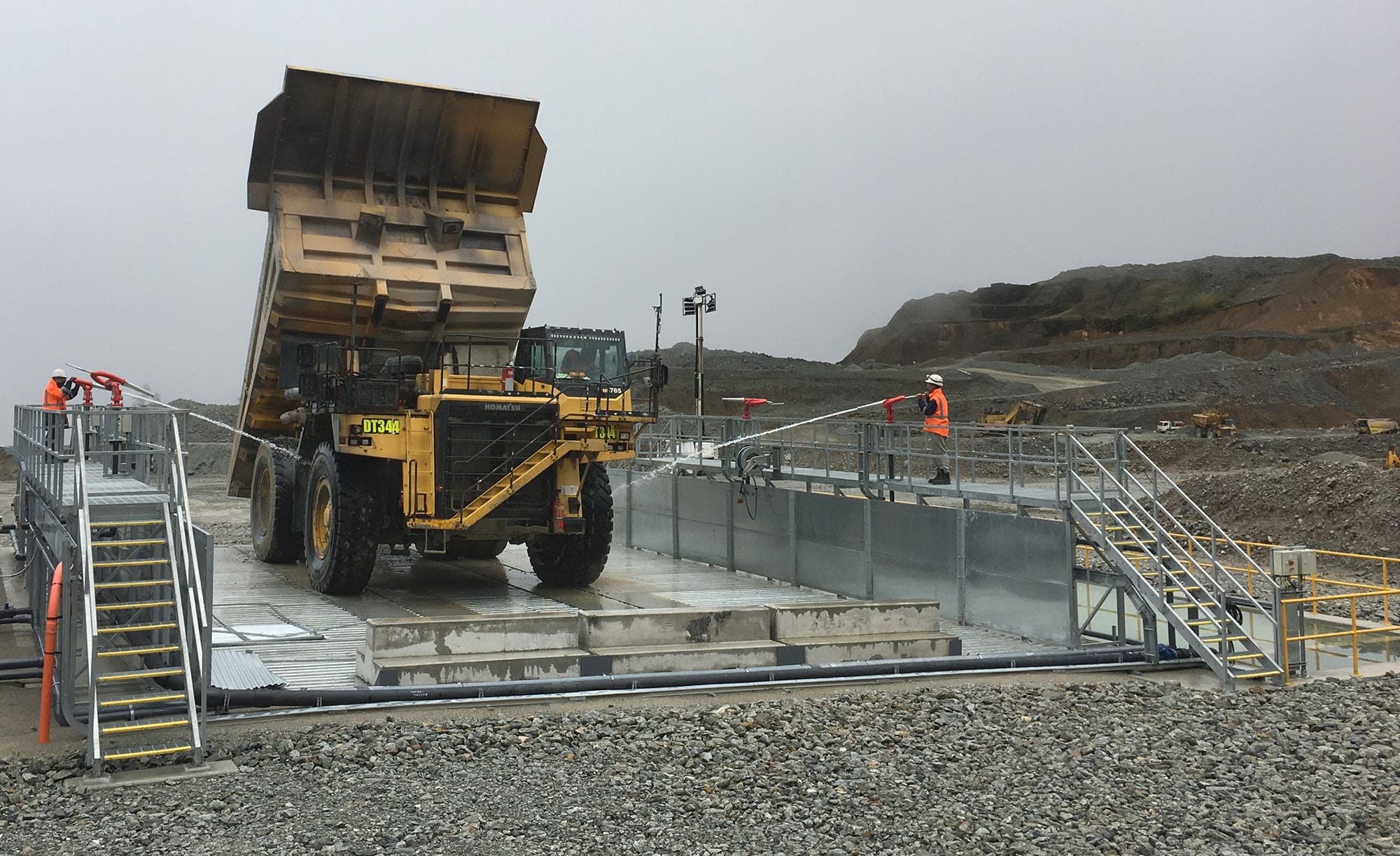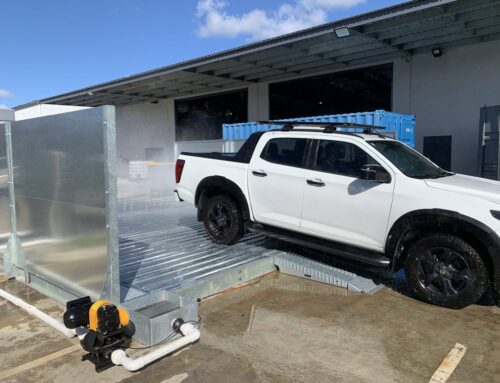Not All Wash Bays Are Equal: Why Durability Is Critical in Heavy Industry
When you operate in mining, equipment hire, transport, or automotive industries, selecting the right wash bay isn’t a nice-to-have—it’s critical. Durability isn’t just about longevity; it directly impacts your compliance, costs, and operational uptime.
Struggling with the case of inefficient wash systems causing downtime? Don’t let generic solutions hinder your operations. You need to get custom solutions, not one-size-fits-all.
Whether you’re dealing with high-frequency vehicle wash cycles, heavy equipment cleaning, or harsh site conditions, cutting corners on durability can lead to water damage, structural failures, environmental penalties, and costly rework. And with Australian regulations tightening and environmental expectations growing, it’s never been more important to choose wash bays that are built to last.
Top 5 Challenges in Industrial Wash Bay Performance
Even well-funded operations can experience the case of costly wash bay issues. These are the top five challenges faced across industries:
- Structural fatigue from heavy machinery or equipment and constant traffic wear down substandard platforms fast.
- Poor wastewater capture, recycling, and treatment results in pollutants entering the environment or sewer system.
- Incompatible setups that don’t match vehicle size, traffic volume, or equipment loads.
- Inadequate water recycling and water treatment systems that fail local discharge standards and can’t recycle effectively.
- The case of non-compliance with local authority regulations leads to warnings, fines, or legal action.
Each of these issues is avoidable with durable design and proper planning.
How Poor Design Leads to Wash Bay Failure

Is the case of generic wash solutions slowing you down? One of the most overlooked causes of wash bay failure is poor design.
This includes:
- Shallow or improperly sloped wash bay floor that causes wastewater pooling.
- Inadequate drainage or lack of equipment like silt traps to handle sediment from heavy equipment.
- Incorrect integration of oil water separators or flush diversion system components.
- Inflexibility to handle fluctuating vehicle loads or unroofed wash configurations.
- Use of low-grade materials that corrode or crack under pressure.
Without robust engineering, even a portable wash bay that looks functional at first can quickly become a compliance and maintenance liability.
Essential Materials That Make Wash Bays Last
Choosing the right materials isn’t optional—it’s fundamental. Industrial wash bays require materials engineered to withstand high-volume and high-weight usage, frequent chemical exposure, and harsh environmental conditions.
Critical materials include:
- Hot-dip galvanised steel for structural components, resistant to corrosion even in coastal and high-rainfall areas.
- Heavy-duty ramps and decks that support axle weights up to 12 tonnes.
- Polyurethane non-slip coatings on wash bay floor sections to reduce the risk of slips.
- Modular, wind-load-rated side walls for unroofed wash areas exposed to the elements.
Investing in high-quality components upfront avoids premature replacement and supports continuous operations.
Design Tips for Building High-Volume, Heavy-Duty Wash Bays
How to customize your wash bays for maximum efficiency.
Designing a high-performance wash bay requires more than adding oil water separators and calling it a day. You need to build a complete system, tailored to the vehicles, wastewater profile, and compliance needs of your site.
Key design considerations:
- Use modular construction to scale up or relocate as needed, especially for remote projects requiring portable wash bay solutions.
- Integrate a flush diversion system to capture first-flush runoff and prevent contaminants in the wastewater from entering your recycling system.
- Ensure correct pre treatment stages are in place: silt traps, grease arrestors, and oil water separators.
- Allow for dedicated holding tanks to manage effluent or temporarily store wastewater in locations with limited sewer access.
- Include water recycling systems to reduce fresh water use and meet sustainability targets.
A quality product is engineered to handle a wide range of site conditions without fail.
Staying Compliant: Environmental and Regulatory Must-Knows
How to ensure your heavy equipment meets environmental compliance?
Australia’s environmental compliance landscape is one of the strictest in the world. Failing to meet standards can result in the case of major penalties—and in some cases, shutdowns.
Key areas of concern include:
- Having the correct trade waste discharge permits.
- Ensuring your wash water meets local authority criteria for chemical, silt, and oil levels before discharge.
- Using compliant pre treatment systems like oil water separators and silt traps.
- Preventing runoff from wash areas into stormwater drains, especially in unroofed wash setups.
- Limiting the impact of noise, overspray, and chemical use on local residents.
Regulatory bodies require detailed documentation of your wash bay design, installation, and ongoing maintenance records. A compliant system isn’t just built—it’s supported.
The ROI of Durable Wash Bay Construction
Stop wasting money on inefficient water systems.
It’s tempting to save on upfront costs with cheaper solutions, but the long-term expenses often tell a different story. Cheap wash bays, whether modular, portable, or permanent, can create repeated costs due to constant repairs, limited lifespan, and ongoing non-compliance.
Comparison table:
| Feature | Low-Quality System | Durable Wash Bay |
| Lifespan | 2–4 years | 10+ years |
| Downtime | Frequent | Minimal |
| Maintenance Cost | High | Predictable |
| Water Use | Unrecycled | Closed-loop |
| Compliance | Risk of non-compliance | Built-in protection |
The ROI is clear. Over time, a high-durability wash bay saves you money, resources, and headaches.
Proactive Maintenance: How to Maximize Wash Bay Life
Even the best wash bays require regular checks to stay efficient and compliant. But with a well-designed system, maintenance becomes proactive rather than reactive.
Here’s what to stay on top of:
- Inspect and empty silt traps weekly.
- Monitor oil water separators for performance, especially during high-use periods.
- Replace filter media in water treatment systems every 6–12 months, depending on load.
- Clean holding tanks and inspect wash bay floor condition regularly.
- Maintain records for local authority audits.
Proactive service extends the life of your system and helps avoid the case of fines or shutdowns.
Tailoring Your Wash Bay to Your Industry: Real-World Examples

One-size-fits-all doesn’t work in every industry. Wash bay design should be based on the case of your site conditions, industry, and workflow.
Examples:
- Mining operations often use large-scale wash water systems with integrated holding tanks and high-volume flush diversion systems.
- Equipment hire depots rely on flexible, modular portable wash bay units that can be moved as site requirements change.
- Transport depots require fast-drain setups with water recycling systems to reduce turnaround times and cut fresh water use.
- Automotive and car wash operators need compact systems with silt traps and oil separators to meet council trade waste limits.
You don’t need to compromise. With a tailored solution, compliance and efficiency go hand in hand. Contact EnviroConcepts today and get tailored solutions perfect for your operations.
Hidden Costs and Safety Risks of Cheap Wash Bays
Buying cheap wash bays often means buying twice—or more.
Hidden costs of poor-quality systems include:
- Frequent structural failures and water leakage from the wash bay floor.
- Increased risk of environmental contamination and legal exposure.
- Higher water usage without recycling, inflating utility costs.
- Exposure to injury from poorly coated surfaces or water pooling.
- Complaints or fines from local residents due to overspray or runoff.
Don’t let non-compliance put your operations at risk. Australian-made systems last 30% longer and come with better warranties and local support. Contact us today for high-quality and compliant wash bay solutions.
A Simple 3-Step Process to Get Started
- Site Assessment
Contact our team at EnviroConcepts. We conduct a full compliance and operational assessment of your location, usage patterns, and constraints. - Custom Design & Engineering
We design a wash bay solution, whether portable, permanent, or more, that includes modular construction, proper pre treatment, and options for water recycling systems. - Fast Delivery & Local Support
Our Australian-based team delivers, installs, and supports your system with fast turnaround and compliance documentation.
Frequently Asked Questions
What’s the advantage of a portable wash bay?
Portable wash bays are ideal for temporary or evolving sites, especially in construction, hire, or mining. They’re quick to install and can be relocated easily.
What if my site doesn’t have a sewer connection?
We can supply systems with holding tanks and water recycling systems for full off-grid operation.
Do you offer support after installation?
Yes. We provide ongoing maintenance, support, and compliance testing to ensure your wash water remains within regulation.
How do I ensure compliance with my local authority?
Our team helps you secure trade waste permits and supplies full documentation, including wash bay design drawings and system specs.
Choose Smart. Choose Durable.
In high-demand environments, durability isn’t optional—it’s a requirement. A compliant, long-lasting wash bay doesn’t just protect your assets and staff—it protects your business.
Discover custom wash bays made right here in Australia. Ready to boost efficiency with tailored water treatment systems? Think custom solutions take too long? Think again.
Contact EnviroConcepts today and take the first step toward smarter wash bay systems built for real industrial conditions.
Get a custom quote or schedule your site assessment.




